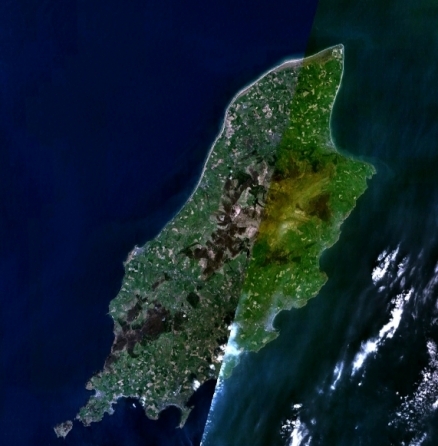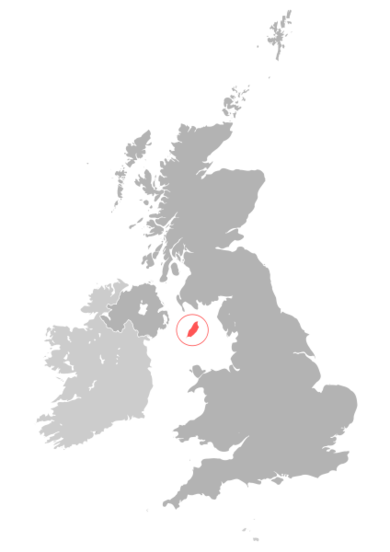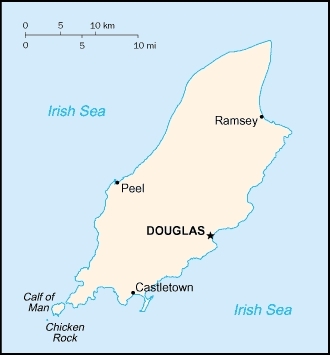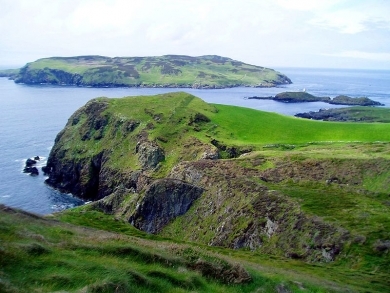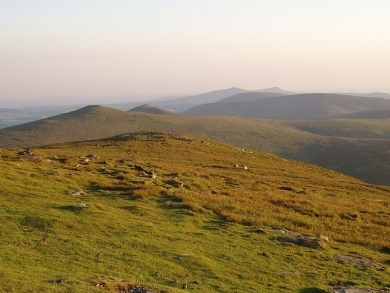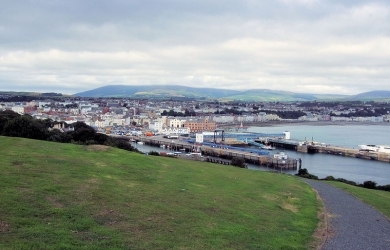Isle of Man
| Topics: |
The Isle of Man is an island of nearly 85,000 people in the Irish Sea, between Great Britain and Ireland. There is also one small islet, the Calf of Man, lies to the southwest and is a bird sanctuary.
The Isle of Man is a British crown dependency but is not part of the UK or of the European Union. However, the UK Government remains constitutionally responsible for its defense and international representation.
Its major environmental issues include waste disposal (both household and industrial) and transboundary air pollution.
Part of the Norwegian Kingdom of the Hebrides until the 13th century when it was ceded to Scotland, the isle came under the British crown in 1765.
Current concerns include reviving the almost extinct Manx Gaelic language.
Geography
Location: Western Europe, island in the Irish Sea, between Great Britain and Ireland
Geographic Coordinates: 54 15 N, 4 30 W
Area: 572 sq km
Coastline: 160 km
Maritime Claims:
Terrain: hills in north and south bisected by central valley. The highest point is Snaefell (621 m)
Climate: temperate; cool summers and mild winters; overcast about a third of the time.
Land Use:
People and Society
Population: 85,421 (July 2012 est.)
Ethnic Groups: Manx (Norse-Celtic descent), Britons
Age Structure:
0-14 years: 16.6% (male 7,362/female 6,664)
15-64 years: 65.2% (male 27,752/female 27,466)
65 years and over: 18.2% (male 7,003/female 8,408) (2011 est.)
Population Growth Rate: 0.882% (2012 est.)
Birthrate: 11.36 births/1,000 population (2012 est.)
Death Rate: 9.95 deaths/1,000 population (July 2012 est.)
Net Migration Rate: 7.41 migrant(s)/1,000 population (2012 est.)
Life Expectancy at Birth: 80.76 years
male: 79.17 years
female: 82.47 years (2012 est.)
Total Fertility Rate: 1.96 children born/woman (2012 est.)
Languages: English, Manx Gaelic (about 2% of the population has some knowledge)
Urbanization: 51% of total population (2010) and not changing (2010-15 est.)
Government
Dependency Status/Government Type: British crown dependency/parliamentary democracy
Capital: Douglas 26,000 (2009)
Administrative divisions: none; there are no first-order administrative divisions as defined by the US Government, but there are 24 local authorities each with its own elections
Legal System: the laws of the UK where applicable apply and include Manx statutes.
Economy
Offshore banking, manufacturing, and tourism are key sectors of the economy.
The government offers low taxes and other incentives to high-technology companies and financial institutions to locate on the island. This has paid off in expanding employment opportunities in high-income industries. As a result, agriculture and fishing, once the mainstays of the economy, have declined in their contributions to GDP.
The Isle of Man also attracts online gambling sites and the film industry.
Trade is mostly with the UK.
The Isle of Man enjoys free access to EU markets.
GDP: (Purchasing Power Parity): $2.719 billion (2005 est.)
GDP: (Official Exchange Rate): $2.719 billion (2005 est.)
GDP- per capita (PPP): $35,000 (2005 est.)
GDP- composition by sector:
agriculture: 1%
industry: 11%
services: 88% (FY08/09 est.)
Agricultural products: cereals, vegetables; cattle, sheep, pigs, poultry
Industries: financial services, light manufacturing, tourism
Currency: Manx pounds (IMP)
